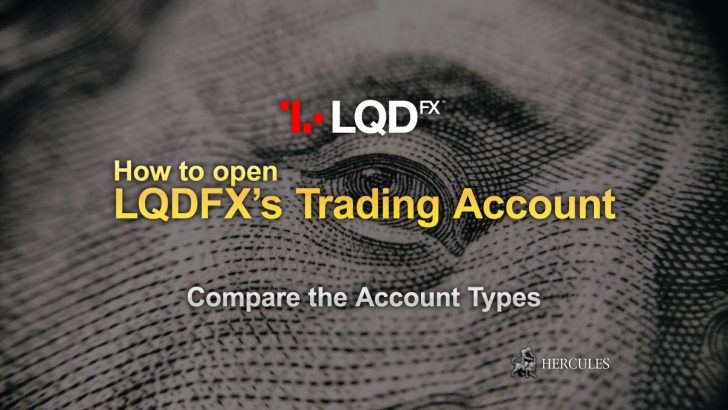Margin
It is basically the amount of deposit needed to ensure the running positions in the market are kept active.
- What is Margin?
- How does margin work?
- Example of Margin account
- Margin can be either “free” or “used”
- What is leverage?
- Example of Leverage and margin
What is Margin?
The amount of money or collateral that must be, in the first instance, provided or thereafter, maintained, to ensure against losses on open contracts.
Initial must be placed before a trade is entered into.
Maintenance or Variation margin must be added to initial to maintain against losses on open positions.
Sometimes herein the amount that needs to be present to establish or thereafter maintained is sometimes herein referred to as necessary margin.
How does margin work?
When an investor decides to invest in the Forex market, and before the investor can place any trade, he or she must first open up, and deposit money, so called margin, into a margin account with a dealer.
Margin can be thought of as a good faith deposit required by a dealer from a client/ investor in order to initiate a transaction/trade with him, or, on the client’s behalf; and maintain the client’s position “opened” until the client decides to “close” it.
The margin is not a fee or a transaction cost, it is simply a portion of the investor’s equity account, set aside and allocated as a margin deposit.
The amount that needs to be deposited depends on the margin percentage that is agreed upon between the investor and the Forex dealer.
In addition, as mentioned earlier, the amount deposited is used for opening and keeping the placed trade(s) running or “open”.
Example of Margin account
For investors/clients that will be trading in 100.000 currency units (1 lot) or more, the margin percentage requested by the dealer is usually 1% or 2%, i.e. $1.000 ($100.000 x 1%).
No interest is paid directly on this amount deposited on good faith, but if the investor does not close his or her position before the end of the day during which the trade was placed, his position will have to be “rolled over”, and interest may be charged/earned, depending on the investor’s position (long or short) and the short-term interest rates of the underlying currencies.
In the margin account, the dealer uses the $1,000 as security.
If the investor’s position worsens and his or her losses approach $1,000, the broker initiates a “margin call”.
In case the additional funds are not transferred to the account in time, the dealer closes out (“stop out”) the position to limit the risk to both parties.
Investors should be aware of the “margin call” and the “stop out” procedures.
Investors should always avoid them at all cost.
Margin can be either “free” or “used”
Used margin is the amount which is being used to maintain open positions, whereas free margin is the amount available to open new position/s.
To calculate the usable free margin that will be available after placing a trade we need some simple math.
If an account has $1000 usable margin available and the trader has a 1% margin requirement and wishes to place a trade for $30.000, the amount that is deposited into the used margin field after placing the trade will be $300 ($30,000 x 1% = $300).
This leaves the trader with $700 of gross usable margin ($1000 – $300 = $700).
The next step is to subtract the spread from the gross usable margin to get the net usable margin.
For example, the EUR/USD is worth $1 per pip for every $10.000 contract (worth of 1 pip per standard contract of $100.000 is $10 / divided by $10.000 position = $1.00).
So a $30.000 contract would equal $3 per pip.
If there is a 2 pips spread then a $30.000 contract would cost $6 ($3 x 2pip spread = $6).
Now take the original $700 gross usable margin and subtract the spread and there is $694 net usable margin ($700 – $6 = $694).
Now let’s find out how many pips the market can move against the position to bring the net usable margin to zero, take the net usable margin and divide it by the cost per pip ($691 / $3 = 230pips).? 694/$3=231.33 (rounded).
In case our investor wishes to place/open additional position(s) the above math calculations should be repeated accordingly.
What is leverage?
In Forex, investors use leverage to profit from the minute fluctuations in exchange rates between the currencies of two different countries.
The leverage ratio that is achievable in the Forex market, is one of the highest those investors can obtain.
Leverage is a “loan” – the liquidity mentioned in the previous paragraph – that is provided to an investor by the dealer that is handling his or her Forex account.
So, leverage is the ability to gear your account into a trading position greater than the amount deposited in your account.
So, an investor who wants to trade $100.000, availing into his account only $1.000, he will leverage his deposit by hundred times (leverage 1:100).
The amount of $100.000 is provided by the dealer.
No interest is paid directly on this borrowed amount, nevertheless, the dealer requests from the investor a margin deposit.
When trading Forex, you are given the freedom and the flexibility to select your real leverage amount, based on your trading style, personality and money management preferences.
Usually, the amount of leverage ratio provided by dealers varies: 1:1 to 1:200, sometimes even higher ratios are offered, up to 1:500, depending on the dealer and the size of the position the investor is trading.
Standard trading is done on 100.000 units (1 lot) of a currency, so for a trade of this size, the leverage provided is usually 1:50 or 1:100.
These days, Forex dealers offer to investors the possibility to trade decimals of one lot (0.1, 0.2, and 0.3, up to 0.9).
Although the possibility to earn significant profits by using leverage is substantial, leverage can also work against our investor.
Leverage has the potential to enlarge, your profits or losses, by the same magnitude, depending on whenever the currency underlying one of his trading, moves in his/her direction or to the opposite side.
The greater the amount of leverage you apply on your capital, the higher the risk that you will take.
Note that this risk is not necessarily related to margin deposits (explained further down) although margin can influence a trader if he is not careful.
To avoid an eventual catastrophe, Forex traders usually implement a strict money management style that includes the use of stop loss and take profit orders.
Example of Leverage and margin
The greater the amount of leverage you apply on your capital, the higher the risk that you will assume.
In other words the bigger position you will open for the same deposit the higher the risk will be.
But you should always remember that the higher is leverage of the account the lower will be used margin and freer margin you will have (applicable for Forex only).
For example
Both, Trader A and Trader B have a trading capital of US$10,000, and they trade with the same broker that requires a 1% margin deposit.
After doing some analysis, both of them agree that USD/JPY is reaching a top and should fall in value.
Therefore, both of them sell, short, the USD/JPY at a rate of 120.00 JPY per $1.00.
Trader A chooses to apply 50 times real leverage on this trade by shorting US$500,000 worth of USD/JPY (50 x $10,000) based on his $10,000 trading capital.
Because USD/JPY stands at 120.00, one pip of USD/JPY for one standard lot is worth approximately US$8.33 ($100.000/120.00/100=$8.33), so one pip of USD/JPY for five standard lots is worth approximately US$41.50 ($8.33 x 5 = $41.66).
If USD/JPY rises to 121.00 Trader A will lose 100 pips (121.00 – 120.00 = -100) on this trade, which is equivalent to a loss of US$4,150.
This single loss will represent a whopping 41.5% of his total trading capital.
Trader B is a more careful trader and decides to apply five times real leverage on this trade by shorting US$50,000 worth of USD/JPY (5 x $10,000) based on his $10,000 trading capital.
That $50,000 worth of USD/JPY equals to just one-half of 1 standard lot.
If USD/JPY rises to 121.00 Trader B will lose 100 pips on this trade, which is equivalent to a loss of $415.
This single loss represents 4.15% of his total trading capital.
To calculate the leverage used, divide the total value of your open positions by the margin balance in your account.
For example, if you have $10,000 of margin in your account and you open one standard lot of USD/JPY (100,000 units of the base currency) for $100,000, your actual leverage ratio is 1:10 ($100,000 /10,000 = 10).
If you open one standard lot of EUR/USD for $150,000 (100,000 x EUR/USD 1.5000) your leverage ratio is 1:15 ($150,000 / $10,000 = 15).
To trade $100,000 of currency, with a margin of 1%, an investor will only have to deposit $1,000 into his or her margin account. The leverage provided on a trade like this is 1:100.
Although a leverage of 1:100 may seem extremely risky, the risk is significantly less when you consider that currency prices usually change by less than 1% during intraday trading.
For instance, if a trader has $1,000 of margin in his account and he opens a $100,000 position, he leverages his account by 100 times, or 1:100.
If he opens a $200,000 position with $1,000 of margin in his account, his leverage is 200 times, or 1:200.
As mentioned earlier, our investor by increasing the leverage, he magnifies both eventual gains and losses.










